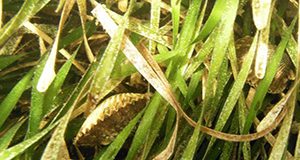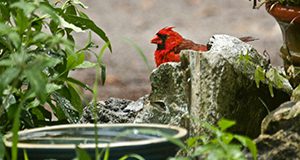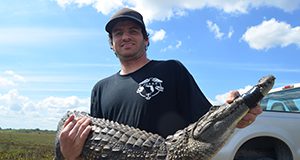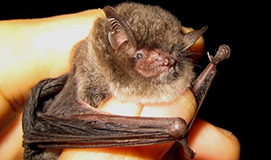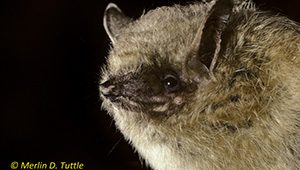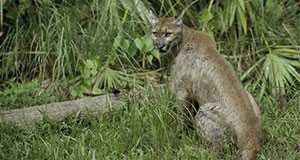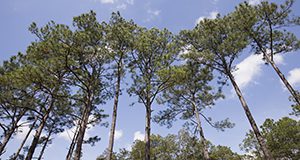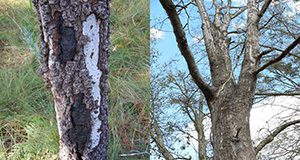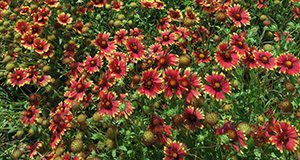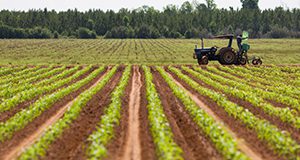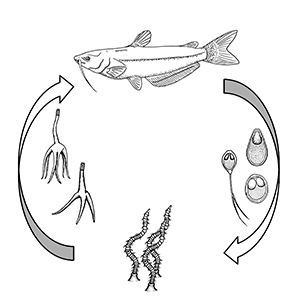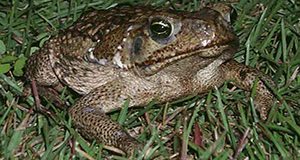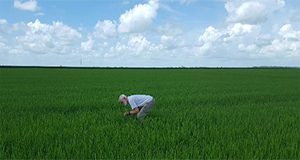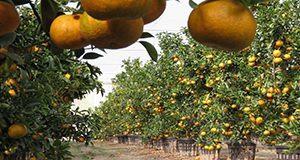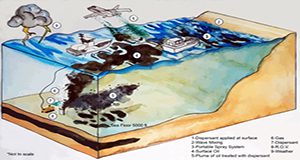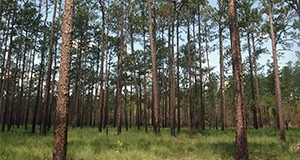Florida leads the country in the number of registered recreational watercraft, with between 867,463 and 921,834 vessels in the state. With so many people out enjoying Florida’s waters, there is significant risk of damage to sensitive coastal habitats such as seagrass meadows. This 4-page fact sheet written by Savanna Barry, Ana Zangroniz, and Joy Hazell and published by the UF/IFAS Florida Sea Grant College Program explains the importance of protecting seagrass meadows by responsible boating and gives tips to boaters about how to practice seagrass-safe boating.
http://edis.ifas.ufl.edu/sg151
Author: Susan Gildersleeve
Responsible Boating Protects Coral Reefs
Florida is often referred to as the boating capital of the nation, with more than 930,000 registered vessels. Florida’s numerous natural resources such as mangroves, seagrasses, estuaries and coral reefs are a major draw to resident and visiting boaters alike. Outdoor activities associated with boating, such as birding, fishing, swimming, snorkeling, and diving, contribute to the state’s economy. However, increased traffic on the water can bring potential risks, particularly to sensitive ocean bottom habitats such as coral reefs and seagrasses. This 4-page fact sheet written by Ana Zangroniz, Savanna Barry, and Joy Hazell and published by the UF/IFAS Florida Sea Grant College Program gives an introduction to the corals and coral reefs of Florida, provides ecological and economic information, and lists simple steps to ensure that safe boating practices reduce physical impacts on coral reefs.
http://edis.ifas.ufl.edu/sg152
Building for Birds Evaluation Tool: Built Areas as Habitat for Forest Birds
A variety of forest birds will use trees and shrubs in built areas as breeding, wintering, and stopover habitat. Scientists have created an online tool to help these birds and the people who appreciate them. This 20-page fact sheet written by Mark Hostetler and Jan-Michael Archer and published by the UF/IFAS Department of Wildlife Ecology and Conservation describes the online tool and shows how it can help forest birds.
edis.ifas.ufl.edu/uw418
Everglades Invasive Reptile and Amphibian Monitoring Program: Summary of the First Five Years
South Florida has more nonnative species of reptiles and amphibians than anywhere else in the world. Some of these species become invasive and harm the environment, economy, and/or public health. Once populations are widely established, management becomes expensive, long-term, and often ineffective. Early detection and rapid response offers the best chance to contain or eradicate populations before they can spread and become unmanageable. Toward that end, the Everglades Invasive Reptile and Amphibian Monitoring Program provides a scientific framework for monitoring invasive reptiles and amphibians in south Florida. It also monitors native reptiles, amphibians, and mammals to assess impacts of invasive species.
This 5-page fact sheet written by Rebecca G. Harvey, Mike Rochford, Jennifer Ketterlin Eckles, Edward Metzger III, Jennifer Nestler, and Frank J. Mazzotti and published by the Wildlife Ecology and Conservation Department lists the objectives, activities, and accomplishments of the program over its first five years, and it describes some ways Floridians and visitors to the state can help with the effort.
http://edis.ifas.ufl.edu/uw431
Florida's Bats: Southeastern myotis
The southeastern myotis is a small forest- and cave-dwelling bat that lives in Florida. Unlike many other species in Florida, southeastern myotis have long hairs between their toes that extend past their claws. You can learn to distinguish the southeastern myotis from other bats commonly found in Florida in this three-page fact sheet written by Emily Evans, Terry Doonan, and Holly Ober and published by the UF/IFAS Department of Wildlife Ecology and Conservation.
http://edis.ifas.ufl.edu/uw433
Florida's Bats: Tricolored Bat
The tricolored bat, formerly known as the eastern pipistrelle, is the smallest bat found in the state of Florida. It weighs just about as much as a nickel and a penny. Because of their small size and erratic flight pattern, tricolored bats are often mistaken for moths when seen in flight from a long distance away. You can learn to distinguish the tricolored bat from other bat species found in Florida with this three-page fact sheet written by Emily Evans, Terry Doonan, and Holly Ober and published by the UF/IFAS Department of Wildlife Ecology and Conservation.
http://edis.ifas.ufl.edu/uw434
Florida's Bats: Evening Bat
The evening bat is a relatively small, forest-dwelling bat. Evening bats are dark brown to yellow with short brown ears and a broad, hairless muzzle. This species looks like the big brown bat but is noticeably smaller. Learn to distinguish evening bats from big brown bats and other common Florida species of bats in this three-page fact sheet written by Emily Evans, Terry Doonan, and Holly Ober and published by the UF/IFAS Department of Wildlife, Ecology and Conservation.
http://edis.ifas.ufl.edu/uw435
Land Trusts in Florida: A Brief Guide to Land Trusts
A land trust is a private nonprofit organization that owns and manages land to protect its natural, economic, and cultural value. Land trusts may also educate the public about local conservation efforts. This two-page factsheet written by Benjamin W. North and Elizabeth F. Pienaar and published by the UF/IFAS Department of Wildlife Ecology and Conservation explains the important role land trusts play and provides tips on how to establish a land trust to protect land in your community.
http://edis.ifas.ufl.edu/uw436
Florida Trees Store Carbon in Forests and Wood Products
Trees store carbon as they grow and produce wood. Carbon, and carbon storage in particular, have become important topics as policymakers, scientists, and industry leaders consider how to address the increasing amount of CO2 in our atmosphere. Because it changes the composition of the atmosphere, CO2 is a leading contributor to climate change. This 4-page fact sheet written by Adam Maggard, Leslie Boby, and Martha Monroe and published by the UF/IFAS School of Forest Resources and Conservation explains how storing carbon in living trees and in long-lasting wood products such as lumber and furniture can reduce atmospheric CO2. Florida’s forest and wood-product industries are worth billions of dollars. Clean water, wildlife, and other benefits add to the value and importance of these forests.
http://edis.ifas.ufl.edu/fr409
Biscogniauxia (Hypoxylon) Canker or Dieback in Trees
Biscogniauxia canker or dieback is a common contributor to poor health and decay in a wide range of tree species growing in many different habitats, such as forests, parks, green spaces, and urban areas, in Florida. This disease is caused by several species of fungi in the genus Biscogniauxia (formerly Hypoxylon). These pathogens do not typically harm healthy and vigorous trees, but once they infect trees under stress from drought, root disease, soil compaction, construction damage or other causes, they can quickly colonize the tree. Once a tree is infected and fruiting structures of the fungus are evident, the tree is not likely to survive, especially if the infection is in the trunk. This 3-page fact sheet written by Claudia Paez and Jason Smith and published by the UF/IFAS School of Forest Resources and Conservation explains the pathogen’s biology and lists signs and symptoms as well as control measures and ways to keep trees healthy to resist infection.
http://edis.ifas.ufl.edu/fr407
A Guide to Planting Wildflower Enhancements in Florida
The establishment of native wildflower plantings in Florida can benefit agricultural producers as well as native pollinators and other beneficial insects. Wildflowers provide forage and nesting sites for bees, butterflies, and other pollinators, increasing wild bee numbers across the farm, and increasing natural enemies of insect pests. This 6-page fact sheet written by Mary C. Bammer, Josh Campbell, Chase B. Kimmel, James D. Ellis, and Jaret Daniels and published by the UF/IFAS Department of Entomology and Nematology discusses choosing the right mix of native plant species to benefit many pollinator species, as well as proper site selection, planting practices, and weed control techniques. Wildflower plots are practical to manage, maximize benefits to wildlife, and fit well into overall agricultural operation management practices.
http://edis.ifas.ufl.edu/in1180
Ant Control in the Apiary
Ants are one of a beekeeper’s most common pests, both in the apiary and in the honey house. Florida and the southeastern United States have a large and diverse ant fauna, with both native and exotic species. The vast majority of ant species have no impact on our bees or us. This 8-page fact sheet written by William H. Kern and published by the UF/IFAS Department of Entomology and Nematology describes the few pest species can cause serious problems and suggests ways to control the ants for healthier hives.
http://edis.ifas.ufl.edu/in1181
Economic Contributions of Agriculture, Natural Resources, and Food Industries in Florida in 2015, Executive Summary

An analysis was conducted using the Implan regional economic modeling system and associated state and county databases (IMPLAN Group LLC) to estimate economic multipliers and contributions for over 500 different industry sectors. Multipliers capture the indirect and induced economic activity generated by re-spending of income or sales revenues in a regional economy. A collection of 121 industry sectors were included in the analysis to represent the broad array of activities encompassed by agricultural and natural-resource commodity production, manufacturing, distribution and supporting services in Florida. Economic contributions can be measured in terms of employment, industry output, value added, exports, labor income, other property income, and business taxes. This three-page summary was written by Alan W. Hodges, Mohammad Rahmani, and Christa D. Court and published by the UF/IFAS Food and Resource Economics Department.
http://edis.ifas.ufl.edu/fe1020
Economic Survey of the Environmental Horticulture Industry in Florida in 2015
The characteristics and economic contributions of the environmental horticulture industry in Florida in 2015 were evaluated through mail and internet surveys of industry firms conducted in 2016. The executive summary of the full report, authored by Alan W Hodges, Hayk Khachatryan, Mohammad Rahmani, and Christa D. Court and published by the UF/IFAS Department of Food and Resource Economics, is available here:
http://edis.ifas.ufl.edu/fe1031.
Myxosporidiosis (Myxozoan Infections) in Warmwater Fish
This 8-page publication written by Justin Stilwell and Roy P. E. Yanong and published by the Program in Fisheries and Aquatic Sciences of the School of Forest Resources and Conservation discusses myxozoans (multi-celled parasites of marine and freshwater invertebrates and fishes). It provides examples of myxozoans that infect aquarium and warmwater fish; describes them and shows their sizes, shapes, and structures; explains their life cycles and how they are transmitted; presents some methods for diagnosing infections in fish; and gives advice for treatment, prevention, and control of myxozoan infections.
http://edis.ifas.ufl.edu/fa201
The Cane or "Bufo" Toad (Rhinella marina) in Florida
Cane toads are an invasive species in Florida and in many countries around the world. They have been established in Florida since the 1950s. Cane toads are larger and more poisonous than Florida’s native toads; they can be fatal to dogs that try to eat them, and they may be harmful to Florida’s native species. Discover the history of cane toads in Florida and learn to distinguish them from native toads. Find out the impacts they can have on both ecosystems and people, and get tips on how to deal with them in yards and neighborhoods in this 6-page publication written by Steve Johnson and Audrey Wilson and published by the Wildlife Ecology and Conservation Department.
http://edis.ifas.ufl.edu/uw432
Rice Water Weevil (Coleoptera: Curculionidae) Distribution and Management in Florida
The rice water weevil, Lissorhoptrus oryzophilus Kuschel, is the most widely distributed and destructive pest of rice in the United States. This 4-page fact sheet written by Matthew T. VanWeelden and Ron Cherry and published by the Department of Entomology and Nematology provides a description of the rice water weevil, its distribution in the state of Florida, methodology for scouting, and options for managing this pest in commercial rice fields.
http://edis.ifas.ufl.edu/in1167
Citrus Under Protective Screen (CUPS) Production Systems
Citrus can be grown under protective screen structures for fresh fruit production in order to completely exclude the Asian citrus psyllid and therefore huanglongbing disease (HLB, citrus greening). The benefits of eliminating HLB are immediate and include rapid, normal tree growth, higher yields of quality fruit, negligible fruit drop, and uncomplicated fertilizer and irrigation requirements. Because CUPS is a relatively new citrus production system with new challenges, current guidelines are preliminary and undergoing constant refinement through research. This summary of concepts, progress, and tentative recommendations from the first three years of CUPS research in Florida written by A. W. Schumann, A. Singerman, A. L. Wright, and R. S. Ferrarezi and published by the Horticultural Sciences Department was condensed from a comprehensive CUPS Quick Start Guide that will be published and updated on the UF/IFAS EDIS website.
http://edis.ifas.ufl.edu/hs1304
Oil Spill Science: Sea Grant Programs of the Gulf of Mexico: Persistence, Fate, and Effectiveness of Dispersants used During the Deepwater Horizon Oil Spill
This 9-page fact sheet concerns the use of dispersants in response to the Deepwater Horizon (DWH) oil spill, the first spill that occurred in the deep ocean, nearly a mile below the surface. The large-scale applications of dispersants used at the surface and wellhead during the Deepwater Horizon oil spill raised many questions about dispersants and highlighted the importance of understanding their effects on the marine environment. Written by Monica Wilson, Larissa Graham, Christine Hale, Emily Maung-Douglass, Stephen Sempier, and LaDon Swann and published by the Florida Sea Grant College Program, the fact sheet was selected for publication on EDIS by Monica Wilson. Originally published at the National Sea Grant Library: https://eos.ucs.uri.edu/EOS_Linked_Documents/gomsg/EX-GOMRI-1%20-%20Wilson_M_2015.pdf
http://edis.ifas.ufl.edu/sg150
Florida's Forest Stewardship Program: An Opportunity to Manage Your Land for Now and the Future
The Forest Stewardship Program encourages landowners to manage their lands for multiple natural resources, increases public awareness of the importance of Florida’s forestlands, and improves cooperation among natural resource agencies and organizations to meet Florida’s forest resource conservation and management needs. This three page fact sheet written by Mary Duryea, Deborah McGrath, Chris Demers, and Anthony Grossman and published by the School of Forest Resources and Conservation explains the program and its benefits and describes how to become a forest steward.
http://edis.ifas.ufl.edu/fr408
